Shear studs are a crucial part of composite construction, serving as the essential connection between concrete slabs and steel structures. Usually, Studs are welded to the top flange of steel support beams, galvanized steel sheeting, and like surfaces, these are steel pins. Studs connect both components so that the steel and concrete function as one unified structure, facilitating effective load transfer and enhancing the construction’s stability.
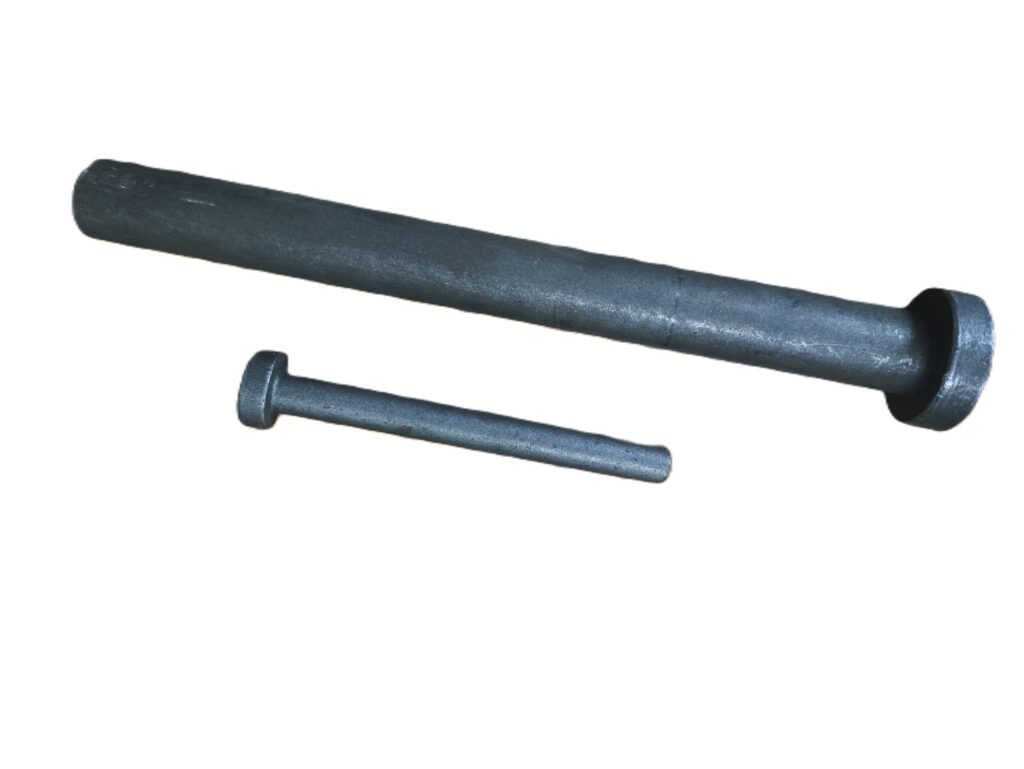
Importance of Shear stud
Shear studs are installed in steel and composite structures to prevent slips between the concrete slab, metal deck, and steel framework. Without them, these components could function independently, resulting in structural failure. Studs addresses this gap by transmitting loads between the compressed concrete and the steel framework, ensuring that both materials work together to smooth the load transfer to the foundation as much. The actual placement, size, and number of studs are chosen by structural engineers depending on project specifications.
Table of Contents
Types of Shear Studs
There are many types of shear studs available with different applications. Here are some of the most commonly used.
Headed Shear Studs:
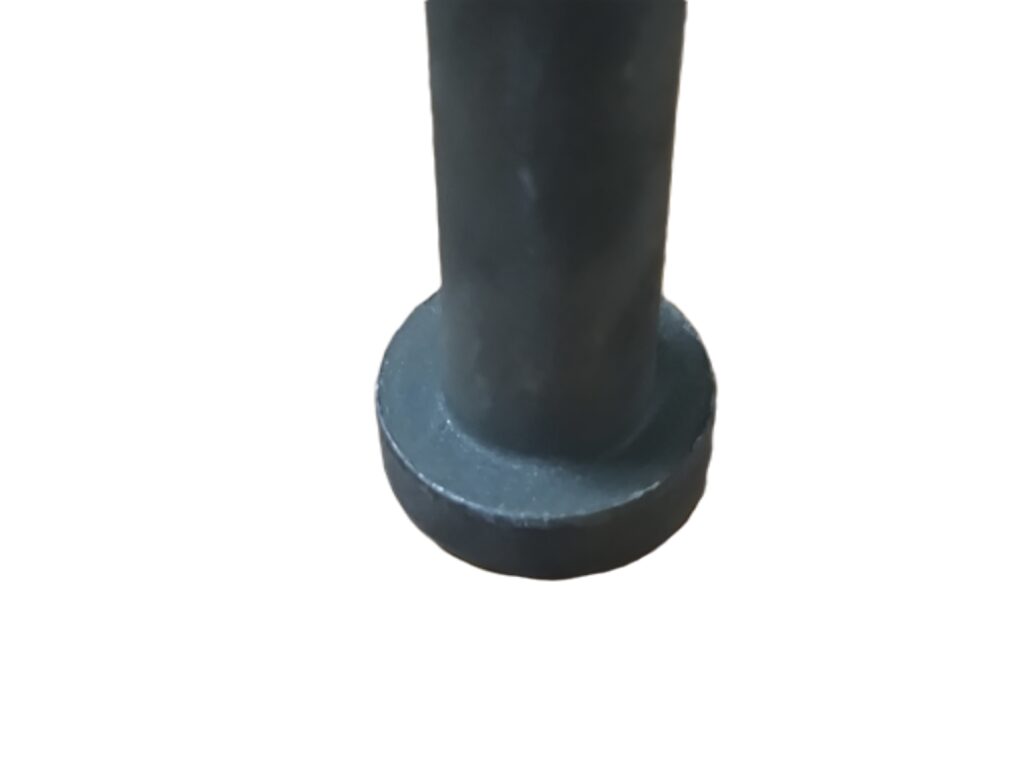
These are the most widely used types. Their heads give additional anchorage in concrete, making them perfect for applications needing high shear resistance.
Threaded Shear Studs:
These studs have threads down their length, which allows for screw-in installation. They are commonly utilized when a detachable connection is required.

Shear Stud Welding
Shear studs are attached to the steelworks through a process called shear stud welding, a specialized arc welding technique. The process involves melting both the base of the stud and the steel surface to form a strong, durable bond when the molten metal cools.
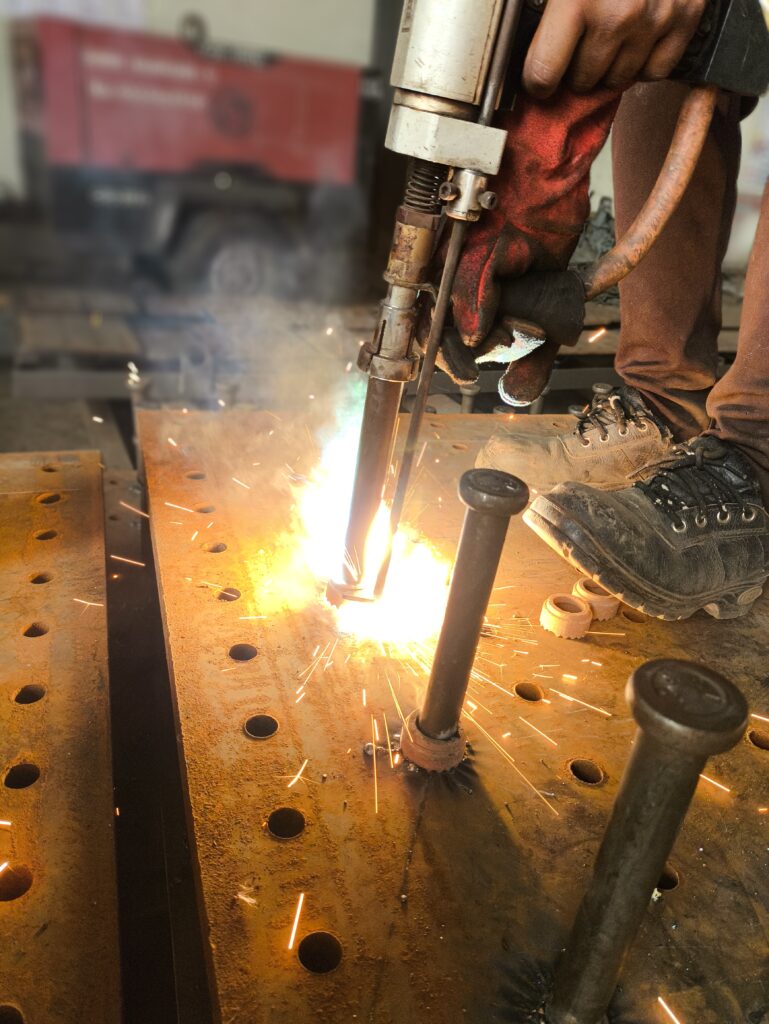
Arc Generation principle in Stud Welding.
The welding gun creates a gap by lifting the stud slightly off the steel surface, which causes an arc to form. An intense arc forms when current passes through the gap, creating the heat required to melt the steel and the base of the stud. The welding equipment regulates the arc’s precision, producing consistently excellent welds.
Key Components in Stud Welding
To achieve reliable results, several components work together in stud welding:
1. Stud Gun

The primary tool used in this procedure is the stud welding gun. It grasps the stud, raises it to form the arc, and presses it into the pool of molten weld. The gun’s precision controls arc time, stud positioning, and the force applied during the plunge.
2. Power Source
The current required to create the arc is supplied by the power source. For reliable operation, direct current (DC) is used in the majority of systems. For small studs, capacitor discharge (CD) welding is utilized, in which the arc is produced by a capacitor bank that rapidly discharges.
3. Aluminum Ball
At the base of many studs is a small aluminum ball, which has several key functions:

- Arc Initiation: It vaporizes quickly to help establish a stable arc.
- Clean Weld Start: By vaporizing, it ensures the arc starts cleanly without contaminants.
- Arc Stability: The vaporized aluminum stabilizes the arc, reducing welding defects.
4. Ceramic Ferrule
The ceramic ferrule is a small ring that surrounds the stud base during welding. It serves multiple functions:
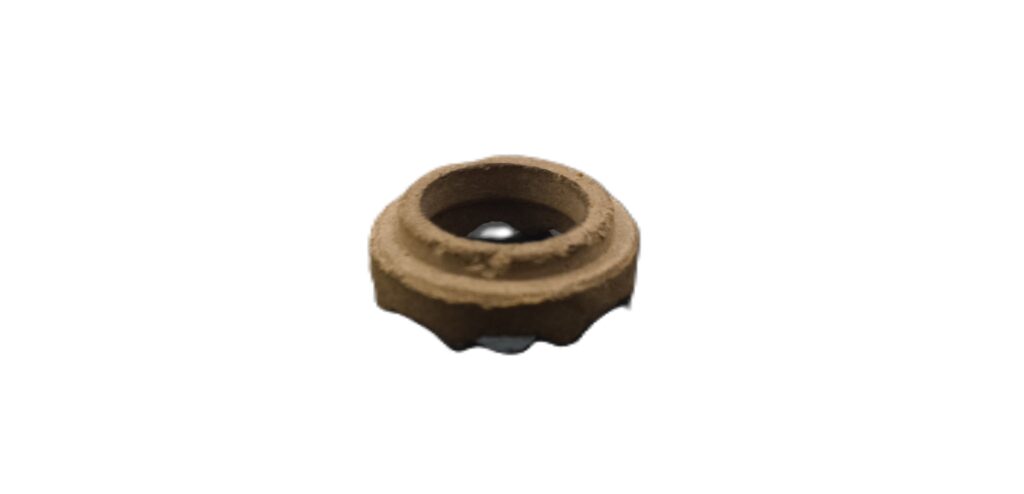
- Arc Shielding: It confines and focuses the arc, ensuring a concentrated weld pool.
- Gas Protection: The ferrule protects the molten weld from atmospheric gases like oxygen, which can cause defects.
- Molten Metal Control: It contains the molten metal, preventing splatter and shaping the weld collar around the stud.
Once the weld cools, the ferrule is removed, leaving behind a clean weld.
Types of Shear Stud Welding
Depending on the material and application, there are different types of stud welding techniques are used:
- Drawn Arc Stud Welding: The most common method for thicker materials, this technique creates an arc between the stud and the base material. It’s ideal for heavy-duty applications needing robust, vibration-resistant welds.
- Short Cycle Stud Welding: For thinner materials, this drawn arc welding form employs a shorter welding duration. It lowers the possibility of distortion by producing strong welds with little heat input.
- Capacitor Discharge (CD) Stud Welding: This technique, which is applied to thin materials and small-diameter studs, uses a high-current capacitor discharge to form the weld. It doesn’t overheat, thus it won’t warp.
Common Welding Defects in Shear Stud Welding
The durability, strength, and integrity of a welded junction can all be adversely affected by welding flaws. As in other welding procedures, these flaws can occur in shear stud welding for a number of reasons, including poor skill, broken equipment, or insufficient planning. For the welds to be reliable, it is essential to find and reduce these flaws through rigorous quality checks. These are a few significant flaws, like
- Porosity:
- Description: Porosity refers to small gas pockets or voids that form within the weld. These can weaken the weld by reducing its effective cross-section.
- Causes: Contaminated materials, improper gas shielding, or moisture in the surrounding environment can lead to porosity.
- Prevention: Ensure proper material preparation, clean surfaces before welding, and use the appropriate ceramic ferrule for shielding.
- Incomplete Fusion:
- Description: Incomplete fusion occurs when the stud doesn’t fully bond with the base metal, leading to weak welds.
- Causes: Insufficient heat input, incorrect arc timing, or poor stud positioning can cause incomplete fusion.
- Prevention: Optimize the welding parameters (e.g., current, time) and ensure the stud gun is positioned correctly and held steady during welding.
- Cracks:
- Description: Cracks in the weld can significantly compromise the structural integrity of the joint.
- Causes: High cooling rates, excessive heat input, or poor material quality can result in cracking.
- Prevention: Control heat input, ensure uniform cooling and use high-quality materials.
- Spatter:
- Description: Spatter refers to molten metal droplets that are expelled during welding, which can adhere to surfaces around the weld.
- Causes: Excessive current, incorrect arc length, or poor arc stability.
- Prevention: Use appropriate current settings and ensure the stud gun’s operation is stable.
- Misalignment:
- Description: Misalignment occurs when the shear stud is not properly aligned with the base metal, leading to an uneven or weak connection.
- Causes: Poor setup, improper stud gun handling, or equipment miscalibration.
- Prevention: Calibrate equipment accurately and ensure precise positioning during the setup process.
Best Practices to Minimize Welding Defects
- Pre-Weld Preparation: Clean the base metal and stud surfaces to remove contaminants like rust, oil, and moisture.
- Equipment Calibration: Regularly calibrate the stud welding equipment, including the gun and power source, to ensure precise control over welding parameters.
- Proper Shielding: Use appropriate ceramic ferrules to shield the arc and prevent contamination from atmospheric gases.
- Consistent Technique: Ensure the operator maintains consistent positioning, timing, and pressure throughout the welding process.
- Routine Testing: Implement regular quality checks during and after welding to catch defects early and take corrective actions.
Quality Checks for Shear Stud Welding
To ensure that the welded joints meet the required standards, various quality checks and tests are performed both during and after the welding process.
1. Visual Inspection
- Purpose: The first and simplest check involves visually inspecting the welds for obvious defects like cracks, spatter, and misalignment.
- What to Look For: Check for uniformity in weld collars, absence of visible cracks, proper stud positioning, and overall cleanliness.
2. Bend Testing
- Purpose: Bend tests assess the integrity of the weld by applying a bending force to the stud.
- Procedure: A stud is bent at a specific angle, usually 30 or 45 degrees, to check for any signs of cracking, detachment, or weld failure.
- Outcome: A properly welded stud should bend without showing signs of cracking or separating from the base material.
3. Torque Testing
- Purpose: Torque tests evaluate the strength of the weld by applying a rotational force to the stud.
- Procedure: A torque wrench is used to apply a specified amount of torque to the stud. The weld should resist this force without breaking or loosening.
- Outcome: The weld should maintain its integrity under the applied torque, indicating a strong bond.
5. Pull-Out Testing
- Purpose: This test measures the strength of the weld by pulling the stud until it breaks or detaches from the base metal.
- Procedure: A specialized testing machine applies a tensile force to the stud until failure occurs.
- Outcome: The results provide data on the load-carrying capacity of the weld, with higher values indicating a stronger connection.
6. Weld Collar Examination
- Purpose: Examining the weld collar is crucial in assessing the uniformity and strength of the weld.
- Procedure: The shape and size of the weld collar are measured and compared to established standards.
- Outcome: A well-formed collar indicates good fusion and a stable weld, while irregular collars suggest possible defects.
Benefits of Shear Stud Welding in Construction
- Efficient Load Transfer: Shear studs ensure effective load transfer between concrete slabs and steel beams.
- Slip Prevention: They prevent slipping between steel and concrete layers, maintaining structural integrity.
- Speed and Consistency: Automated welding is quick and produces consistent, high-quality welds.
- Minimal Preparation: The process doesn’t require pre-drilling, saving time and effort.
Conclusion
In order to ensure the strength and stability of buildings, shear stud welding is an essential technique in composite construction. Understanding the functions of parts like the stud gun, power supply, ceramic ferrule, and aluminum ball as well as the theories underlying arc formation allows us to grasp how shear stud welding provides dependable, high-quality connections in contemporary construction.
For more informational content, please visit my website: Gyaanpool.com
For more information on stud welding, please visit the page: Wiki.
You can also, visit my YouTube channel-Feather
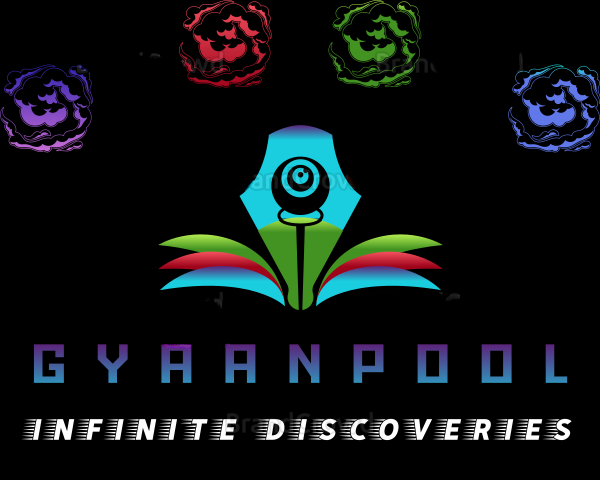
Good
Good Job keep it up 👍
Found quite interesting in this blog,
Very helpful keep going.
Your passion for your subject matter shines through in every post. It’s clear that you genuinely care about sharing knowledge and making a positive impact on your readers. Kudos to you!SABA303
Hello my loved one I want to say that this post is amazing great written and include almost all significant infos I would like to look extra posts like this.